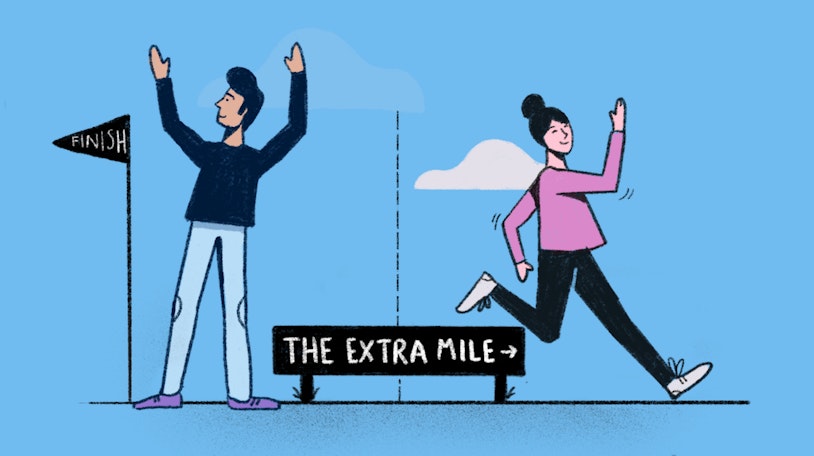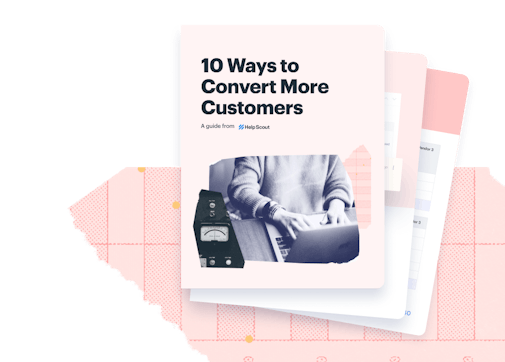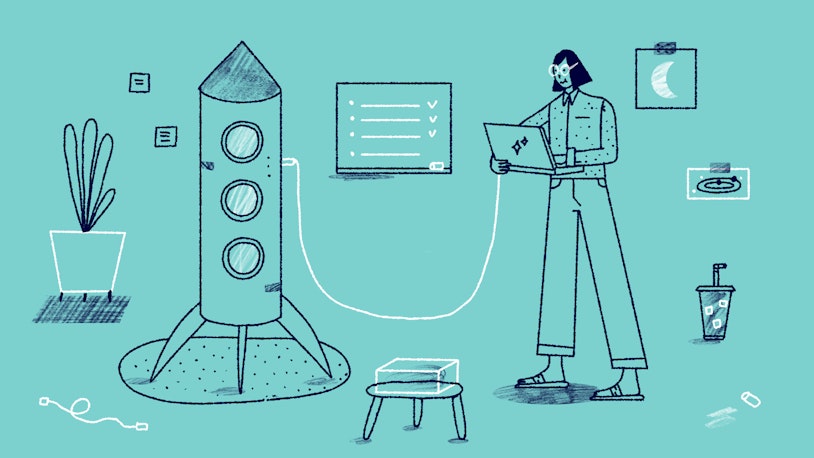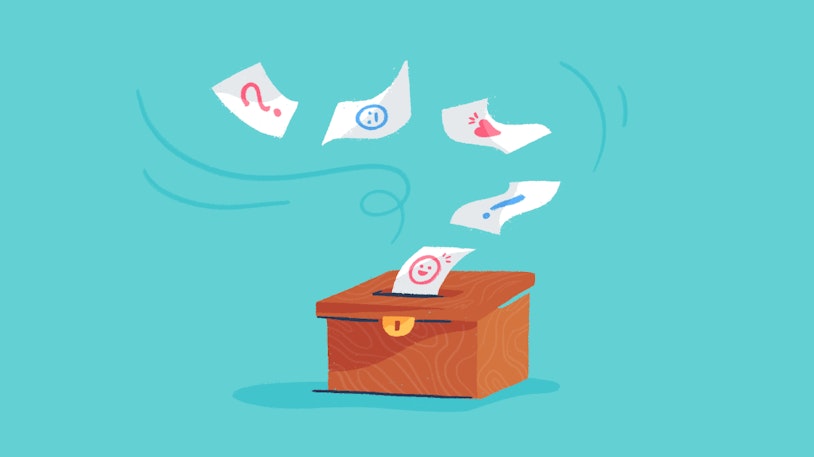Customer success is often overlooked as a growth driver for SaaS businesses. Most companies focus on acquiring new customers and forget that retaining their existing customers is just as important.
But in SaaS, everything compounds. If you’re losing 10% of your customers each month, that becomes a massive 71.8% over the year. Put another way: If you started the year with 100 customers, you’d only have 28 of them left by the end of the year, meaning you’d have to acquire 72 new customers in the year just to break even.
That’s where having a SaaS customer success strategy comes in. If sales and marketing drive customer acquisition, then customer success drives retention and reduces churn.
What is SaaS customer success?
Lincoln Murphy defines customer success as “when your customers achieve their Desired Outcome through their interactions with your company.” Customer success is a defined strategy for helping your customers be successful when using your product.
SaaS is built on the recurring revenue model: To grow a SaaS business quickly and sustainably, you need to acquire customers and retain them.
This means customer success plays a role across the entire customer life cycle:
Onboarding and activation: Successful onboarding gets your customers into your product, set up, and getting value from using it.
Renewal and retention: Customer success works in partnership with your customers, helping them get value from your SaaS throughout their contract. This should improve customer retention and lower customer churn rates.
Customer advocacy and referral: Customer success focuses on meeting your customers’ individual needs and making them successful with your product. A successful customer is a happy customer, and only happy, successful customers will recommend your product to other people.
Customer success vs. customer support vs. account management
There are a few different disciplines within customer success that are sometimes used interchangeably; however, each does have its own distinct characteristics.
Customer success vs. customer support — Customer success is proactive in its approach; customer support is reactive. A customer success team might work to develop a comprehensive onboarding experience for new customers; customer support would provide clarifying details to that same customer if they were unclear about something in the onboarding process.
Customer success vs. account management — The main difference between customer success and account management is their primary goal: Customer success is more concerned with retention while account management is usually interested in expansion.
Customer support vs. account management — Similar to customer success, customer support is more interested in reducing churn and isn’t primarily interested in expansion, though they do contribute. Also, customer support generally serves all customers, whereas account managers usually have a set number of accounts they’re responsible for.
Why is customer success important for SaaS companies?
Recurring revenue is the lifeblood of any SaaS business. If you’re struggling to retain customers, your SaaS company will struggle to grow.
Customer success is important for SaaS companies for three main reasons:
It reduces churn. The higher your customer churn rate, the more difficult it will be for your SaaS business to achieve growth through new customer acquisition.
It maximizes customer lifetime value. If your customers are successful using your product, they’re less likely to churn. A one-year contract becomes two or three — or even longer — and can grow with the customer if there are good fit opportunities to upsell and cross-sell.
It unlocks second-order revenue. Second-order revenue is revenue that comes from customer referrals as well as from customers changing jobs and bringing your product to their new companies. Making your existing customers successful makes it more likely that they’ll want to recommend your product to their network or continue using it when they move on to new roles.
The key roles on a customer success team
It’s hard to build a strong customer success team if you don’t know what roles you should be hiring for. Depending on team size and available resources, some roles may be more important than others, but having a good understanding of the overall landscape should still be useful, no matter what stage you’re at.
Below is a list of customer success roles, from executive to entry level, you should consider when putting together your team.
Chief customer officer (CCO)
This is a c-suite level role that is generally responsible for all customer-facing functions in a business — including customer success. Their role is to plan, advocate for, and execute on the overall customer experience strategy at a company.
Vice president of customer success
Unlike a CCO, a VP of customer success is solely focused on the customer success function of a business. They create the overall customer success strategy and hire others to execute on that strategy. They also determine and report on high-level success metrics for the team.
Manager/team lead of customer success
This person oversees the day-to-day operations of the customer success team. They are a people manager and would be the person in charge of coaching individual contributor roles on the customer success team as well as tracking their performances and making sure their efforts are in line with overall team goals.
Customer success managers
Customer success managers are individual contributors who work directly with customers. They are integral in things like customer onboarding and generally serve as the point-person for the customers they handle.
Implementation manager
An implementation manager is a specialized role focused on the onboarding experience. Implementation managers are more common in companies where their product is particularly technical or in cases where there’s a significant installation required to start using a product or service.
SaaS customer success best practices
Below, we break down seven customer success best practices for growing SaaS companies. These are actionable ideas you can put into practice to improve customer retention and satisfaction, turning one-time customers into long-term advocates.
1. Make customer success an early priority for your SaaS business
The earlier you start focusing on customer success, the easier it’s going to be. Jason Lemkin believes customer success should be a “single-digit hire” — one of the first 10 employees in your business.
Hiring a dedicated customer success manager early will help you build a customer-centric company. This makes it clear that your customers are your priority: You’re investing valuable time, energy, and money in helping them be successful with your product and your company.
But if you’re looking to build a customer-centric SaaS company, it can’t just be the responsibility of your customer success team. Customer centricity needs to be a mindset that’s shared across the company.
2. Know what success looks like for your customers
How can you find out what success looks like for your customers?
Well… you could ask.
Run a survey as part of your onboarding process; do regular customer feedback surveys after that; get your sales team to ask leads about their goals; host customer dinners; talk to customers at conferences.
It’s important to remember that each customer will have their own specific goals and their own definition of success — their own “desired outcome.”
As you speak to more people, you’ll build up a solid understanding of common themes in what your customers look for from your product, and you’ll be able to tailor your onboarding process and messaging with that in mind.
3. Create an onboarding process to set your customers up for success
The first goal for your customer success team is to get each new customer signed in, set up, and using your product. But more than that, a successful onboarding process helps your customer get value from your product in that very first session.
Some SaaS companies provide a dedicated onboarding manager to walk new customers through their onboarding step by step. This is highly tailored and mostly reserved for enterprise companies or high-value customers.
Much more commonly, SaaS companies automate their onboarding processes with a combination of a product walkthrough and a few automated emails with handy tips to get started.
Whichever approach you take, it’s important to have a process that delivers value to your customers as early as possible to encourage them to keep using your product.
4. Don’t forget that offboarding matters, too
So many SaaS companies focus on acquiring and retaining customers that they ignore the unpleasant truth: Sometimes customers will churn.
Your offboarding process is just as important as your onboarding one. You want customers to leave on a good note; just because a customer is leaving now doesn’t mean they’re leaving forever. Today they’re still your customer even if they won’t be tomorrow.
There are several important parts of your offboarding process:
Cancellation process: We all know the fury of trying to cancel a subscription online only to find out you need to call back during business hours, Monday to Friday. Make it as easy as possible for your customer to cancel their subscription. If they’ve made up their mind, hiding the link somewhere obscure on your website won’t change that; it’ll just make them angry and leave them with a negative impression of your company.
Integrations: Does your SaaS integrate with other products that your customer uses? How will canceling this subscription affect those integrations? Make sure they are aware of this — again, it will leave them with a bad impression if their carefully-crafted integrations stop working without warning.
Access to data: It’s important to ensure that customers are still able to access their data from your SaaS once they’ve canceled. For example, after canceling my subscription to Drip and moving to a different tool for email marketing, I was still able to access my account to download previous emails, customer data, and analytics data for several months.
Access to your product: Do you want churned customers to be able to access your product at all? Some companies downgrade users to a free, limited-features tier when they cancel a paid subscription, retaining them as free users instead of losing them altogether.
5. Keep an eye on your customer data
Usage data is a customer success manager’s best friend. At its simplest, you need to know whether customers are actually using your product. A customer can’t be successful with your SaaS if they never use it.
Monitoring your customers’ activities will help you:
Understand how they’re using your product.
See how often they’re using your product.
Provide better help and support if needed.
Identify customers who are getting the most from your product who might be a good upsell opportunity.
Identify customers who are at risk of churning.
6. Create a process for collecting, sharing, and taking action on customer feedback
Getting feedback from your customers is essential for understanding their needs, priorities, and experiences with your product. Your customer success team is in the perfect position to regularly gather feedback from your customers by:
Using in-app surveys such as customer satisfaction score (CSAT) or net promoter score (NPS) to measure customer sentiment.
Asking for online reviews on sites like Capterra, Trustpilot, or G2. While reviews can be good or bad, the positive reviews make fantastic social proof for your business.
Sharing key quotes — from customer emails or phone calls, for example — in an internal Slack channel dedicated to collecting customer feedback.
The most important thing: If your customer success team spends time collecting customer feedback, actually use that feedback. It shouldn’t just get dumped in a spreadsheet and forgotten.
Collecting feedback is just the start. Once you have feedback from a number of different customers, you can analyze trends and use that feedback across the business, such as to guide the messaging on your marketing site or to feed into your product roadmap.
7. Make it easy to contact your customer success team
If a customer has a problem with your product, don’t make them dig around in their email to contact you. Offer different ways for customers to find information and support, such as:
A dedicated email address for your customer success team.
A phone number for their customer support manager.
Live chat on your website.
User forums.
A knowledge base with articles explaining product features, tips, and troubleshooting info.
Making it easy to contact your customer success team will make it more likely that a panicked customer will contact them directly instead of venting their frustrations on social media.
Your customer success team may then transfer them to your support team, but even if they don’t directly solve the customer’s problem, they’ll leave a positive impression of being supportive and available to help.
5 useful SaaS customer success tools
Creating a well-oiled customer success team is a task made much easier with access to the right tools. Since there are multiple facets to customer success, chances are you and your team will benefit from having access to multiple tools.
Below is a list of tool categories to consider and a few options for each. Each option within the categories is similar in functionality but varies slightly from tool to tool.
1. Customer support software
As the name suggests, customer support software is a tool mainly focused on providing customer support. Some of the tools below may have additional functionality beyond the support use case, but each is primarily focused on support.
Customer service tools to consider:
2. Customer success management software
Customer success management software is dedicated to finding insights to better understand potential future behavior of your customers. You can then use those insights to identify customers at risk of churning and improve your chances of retaining them and ensuring they’re successful with your product.
Customer success management tools to consider:
3. Customer relationship management software
Customer relationship management software (generally referred to as a CRM) is generally marketed as a sales tool. A CRM houses customer details and can even be used to enroll people in different email campaigns and other things of the sort. You can think of it as your HQ for current, previous, and potentially new customer data.
Customer relationship management tools to consider:
4. New user onboarding software
Onboarding software can help you formalize the process of teaching new customers about your product(s) and services. By doing so, you increase the likelihood that your customers are successful with your product and stick around for the long haul.
New user onboarding tools to consider:
5. Survey and sentiment tracking software
A crucial part of improving your customer success efforts is gathering feedback. Things like customer interviews can be useful but are time-consuming, resource-intensive, and only give a narrow view. With survey and sentiment tracking, you’re able to get a more complete picture of the areas where you’re excelling and where you have room for improvement.
Survey and sentiment tracking tools to consider:
A foundation for a successful future
A solid customer success program is foundational to creating a healthy business. Of course you need to attract new customers, but if none of them stick around, neither will you. Be intentional about building a team, look for tools that can help lighten the load, and cover all your bases.
As the cliche goes, what you put in is what you’ll get out. Remember, your customers made an investment in you — it’s only right you do the same for them.













